Pax Andalucia between 100 BC and 180 AD a period of peace in Baetica, Roman occupied Andalucia, Romanisation of Baetica.
By Nick Nutter | Updated 8 Mar 2022 | Andalucia | History |
Login to add to YOUR Favourites or Read Later
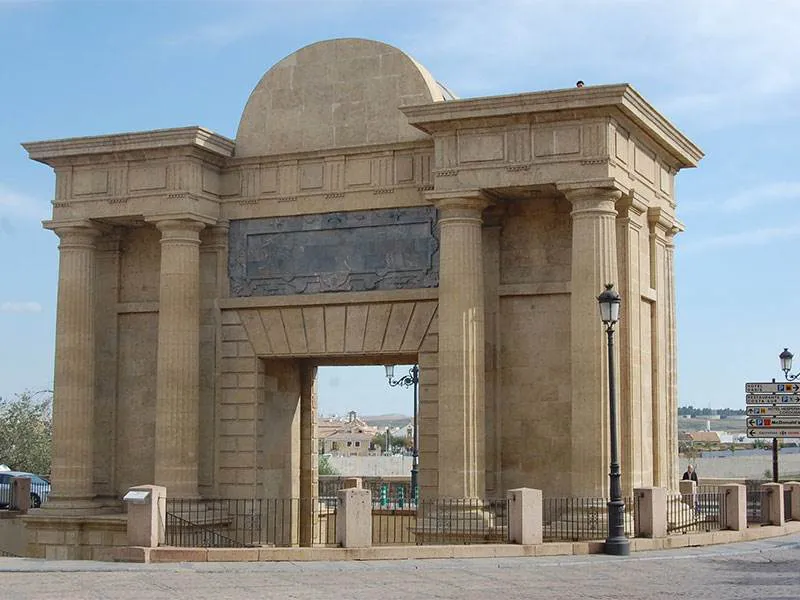
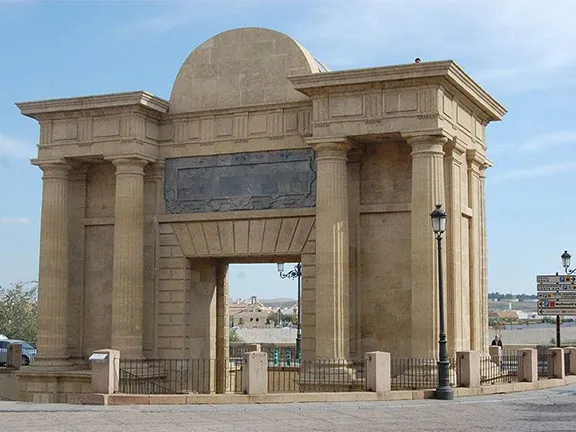
Triumphal arch Cordoba
This period is known as Pax Andalucia, reflecting the peaceful nature of the time, in contrast to the turmoil in Rome itself that lasted until 27 BC when Augustus became emperor.
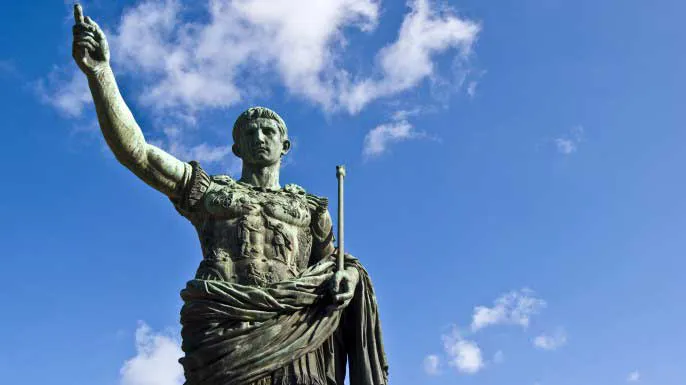
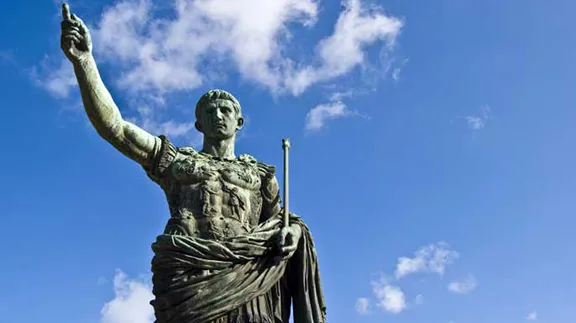
Julius Caesar
It is during this period that Hispania Ulterior witnessed a massive increase in settlement. Towns and villas were built on an unprecedented scale, and existing Iberian towns were Romanised. Baelo Claudia, on the Atlantic coast near Bolonia in Cádiz province, was founded at the end of the 2nd century BC. The remains are the most comprehensive example of a Roman town in the whole of the Iberian peninsula. It reached its peak between 41 and 45 AD when Emperor Claudius ordered the building of much of the monumental complex. Baelo Claudia was granted the status of municipum.
This period saw a significant increase in Romanised development of existing settlements like Gadir (Cádiz) and the establishment of coloniae which conformed to a Roman model of what constituted a town. The model was based on the city of Rome. The number of coloniae established in Baetica is a matter of considerable academic dispute but, coloniae or not, the ‘model’ was implemented at Corduba (Córdoba), Hispalis (Seville), Astigi (Ecija), Ucubi (Espejo), Urso (Osuna), Hasta Regia (Asta), Italica (Santeponce), Iliturgi (Mengibar) and Asido (Medina Sidonia).
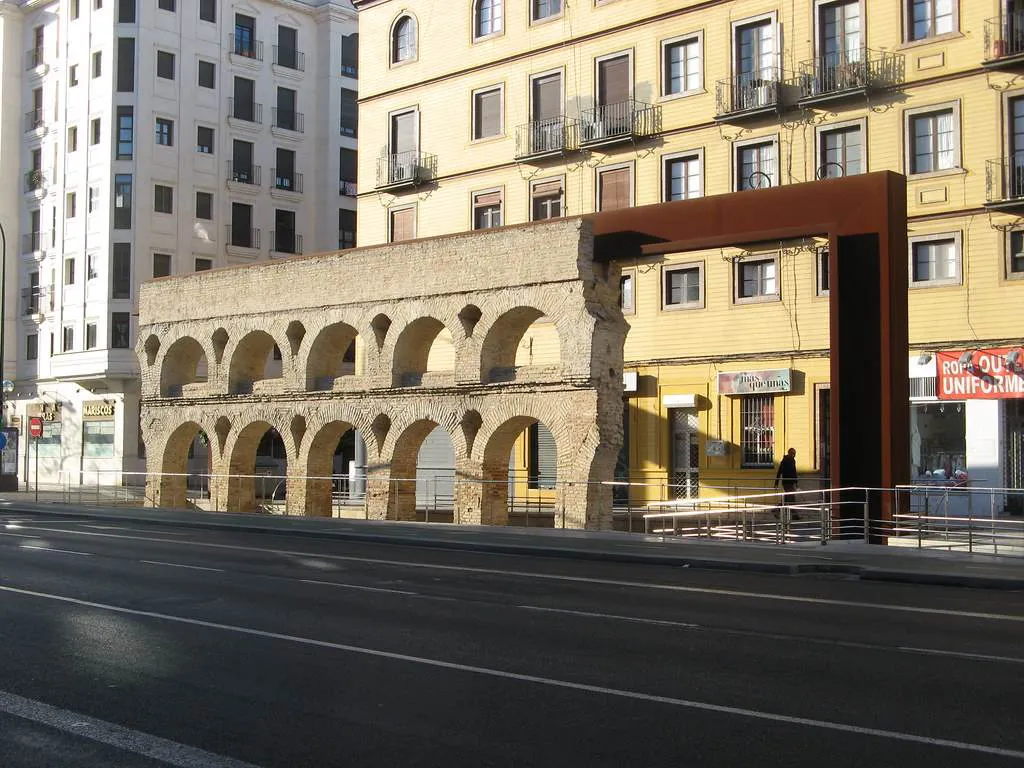
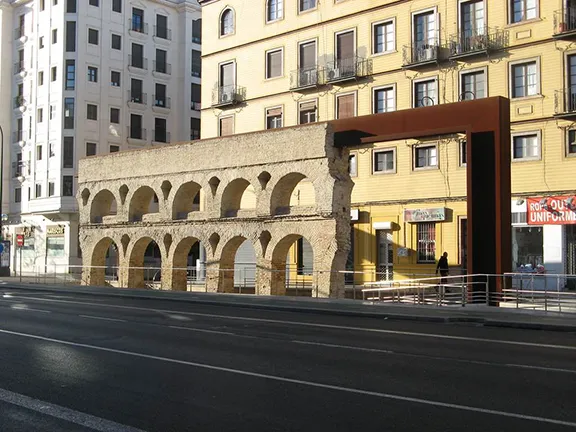
Aqueduct in Seville
Apart from the local rebellions in the valley of the Baetis (Rio Guadalquivir) in the first part of the 2nd century BC, and the brief period of battles between Optimates and Populares, the Roman period in Hispania Ulterior was a relatively peaceful time, unlike the more northern parts of Spain where the Roman Republic and, after 27 BC, the Roman Empire, was almost continuously in a state of war. It is not difficult to see why peaceful Andalucia was so attractive to the retiring soldiers and wealthy Romans who wanted or needed to escape the intrigue of Rome.
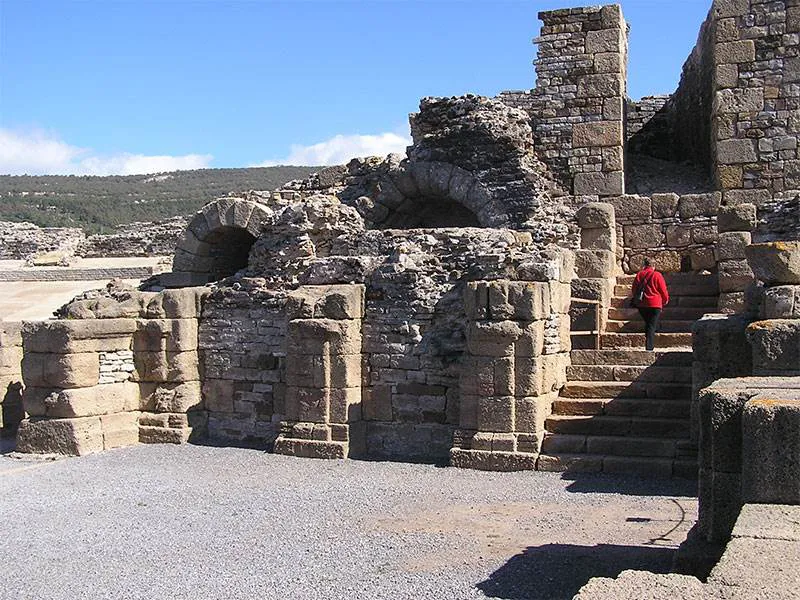
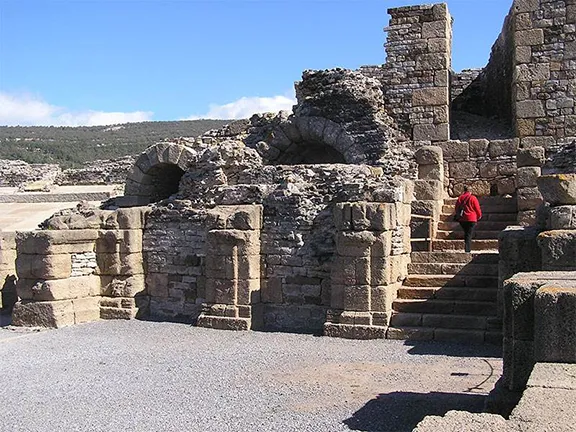
Baelo Claudia
In Rome, during this period, the social and political world was undergoing a violent transformation. There are many reasons why the late Republic created two political parties; the Optimates, basically Conservative old established wealthy families such as that of the great general Pompey and the Populares extolling the virtues of the common man but itself, as a party, led by renegade members of Optimate families, like that of Gaius Julius Caesar.
Small farms were bought up by the Optimates to make vast estates that were then mismanaged as a result of which Rome could not always feed itself. Hundreds of thousands of freed slaves from occupied territories, now employed on farms in Italy and more settled areas of the Empire created a class of jobless, idle Romans who moved to the cities. The vast wealth pouring into Rome from all corners of the occupied territories provided the temptation and opportunity for corruption. Altogether a recipe for disaster that was to bring the Republic down through a series of civil wars and internal political strife. It fell to a man called Gaius Julius Caesar to take the reins and become the first dictator and for Augustus in 27 BC to become the first Roman Emperor although he never gave himself that title.
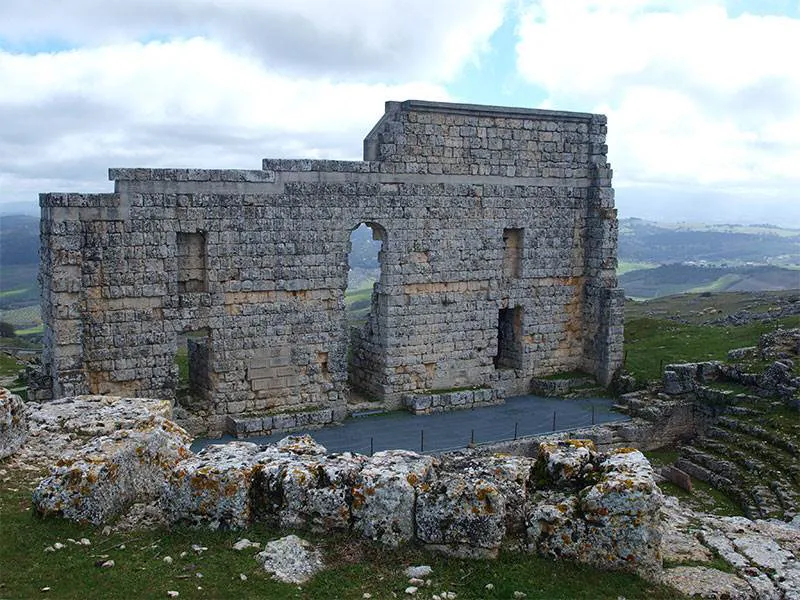
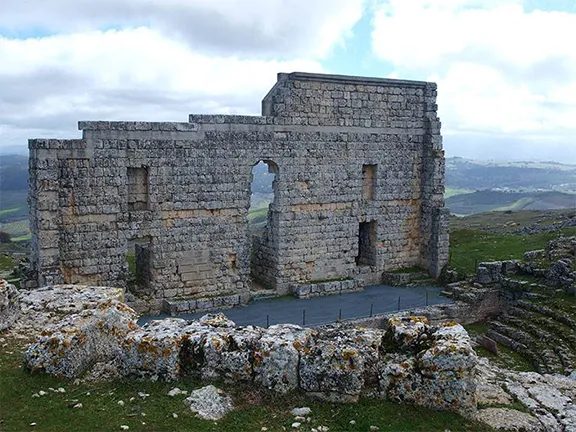
Acinipo
During the last years of the Republic, in 69 BC, Caesar made his first visit to Spain as an administrative official. It was on this visit that at Cádiz he saw a statue of Alexander the Great and it was said that he broke down and cried in front of it. When asked why he would have had such a reaction, his response was: “Do you think I have not just cause to weep, when I consider that Alexander at my age had conquered so many nations, and I have all this time done nothing that is memorable?”
In 61 and 60 BC, Julius Caesar made his mark in Spain, developing his reputation as a military commander by winning important victories over the Spanish Calaici and Lusitani tribes and even marching into the north-west of Spain, an area that had never before been conquered. While Caesar was subduing the natives, he had cause to call at Carmona (east of Seville) and wrote later, in his De Bello Civile, about Carmona’s ‘mighty wall’.
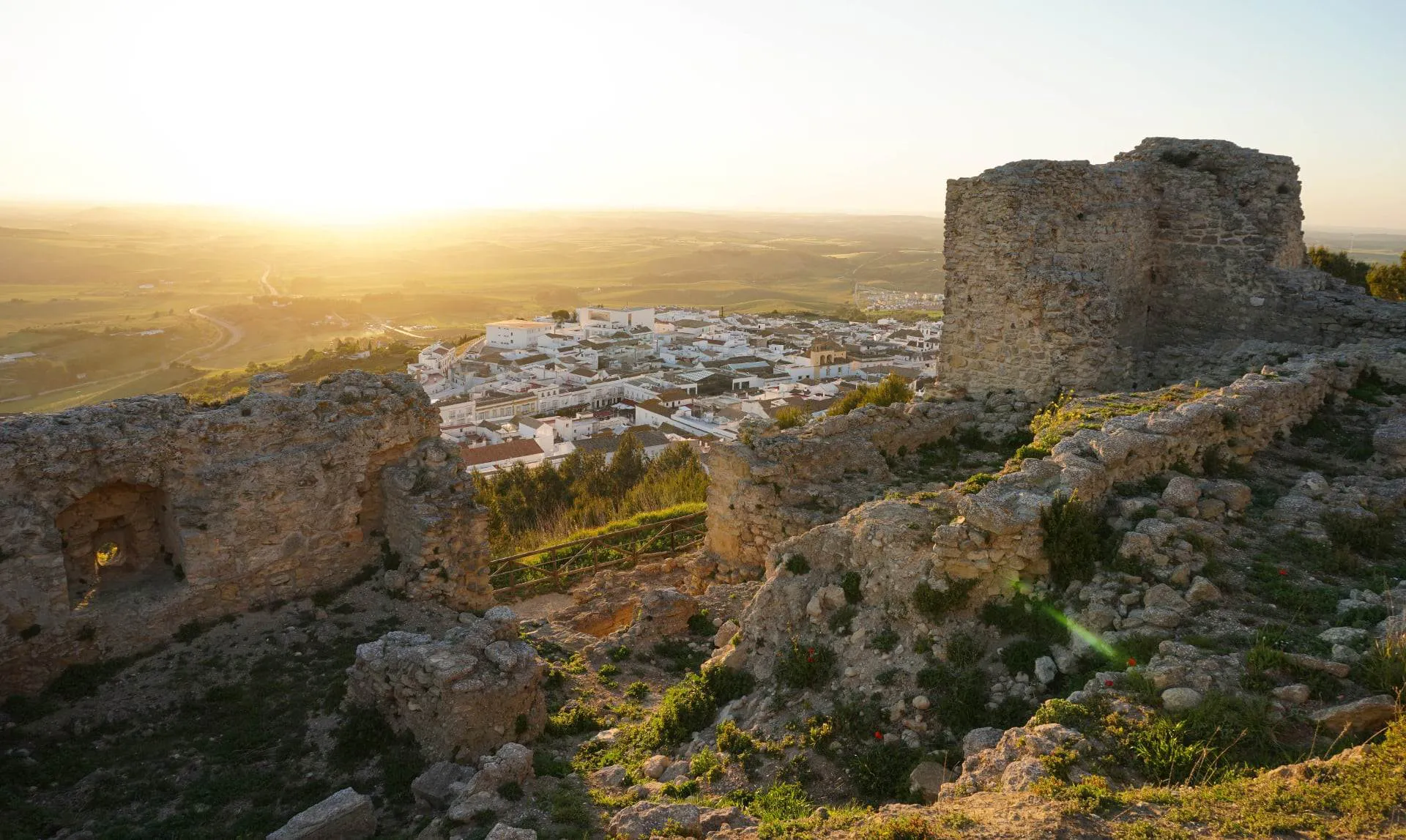
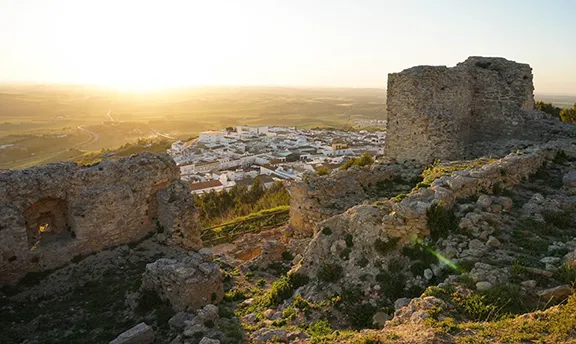
Medina Sidonia
After an eventful interim subduing Gaul and Britain and driving an Optimate army out of Italy, Caesar came back to Hispania in 49 BC, by now a committed Populares, to defeat Pompey’s legions in Hispania at the Battle of Ilerda (Lleida in Catalonia). The battle resulted in the main Republican legions surrendering to Caesar, who promptly left Hispania to resume a siege on Marsailles.
He returned in 46 BC to fight Pompey’s sons Gnaeus and Sextus. Between 49 BC and 46 BC, Caesar had ‘crossed his Rubicon’, and driven the remaining Optimates out of Italy, Greece, Egypt (where Pompey the Elder himself was killed), and North Africa. The only Optimate forces remaining were in Hispania. They consisted of Pompeian veterans who declared themselves for Gnaeus Pompeius, and the remnants of the Pompeian army from Africa, that managed to join them. In total the Pompeian army raised three legions and took control of Hispania Ulterior including the important towns of Italica and Córdoba. Caesar’s generals in Hispania requested help from Caesar and camped at Obulco (Porcuna in Jaén province) some 55 kilometres east of Córdoba while awaiting a reply.
This was the occasion of the legendary 27 days forced march from Rome to Spain, a distance of 2,400 kilometres. Caesar brought with him two legions to supplement the forces already in Hispania. During the winter of 46 – 45 BC, Caesar’s forces relieved the siege of Ulipia (location not known), a town besieged by Gnaeus and loyal to Caesar, but was unable to defeat Sextus and take Córdoba. Instead, he moved around the countryside procuring food for his legions and in the meantime taking the fortified city of Ategua, 15 kilometres southeast of Córdoba. His actions started to demoralise the besieged Pompeians and their native allies, some of whom planned to defect to Caesar. Gnaeus was forced to leave the city and face Caesar in battle. The opposing armies met on the ‘plains of Munda’, 1.5 kilometres outside a fortified town. Over the years there has been much debate as to the location of Munda, the site of the final and decisive battle of Caesar’s Civil War against the Optimates. The likeliest candidate is considered to be the town of Osuna in Seville province about 90 kilometres southwest of Córdoba.
At the Battle of Munda, Caesar, who in his own words, ‘always fought to win’, fought his ‘first and only battle for his life’ as, at one point in the battle, he was forced to fight alongside his own, hard-pressed troops. The result, however, was a clear victory for Caesar and his troops. Gnaeus and Sextus managed to escape the battlefield, and their remaining forces took refuge behind the walls of Munda.
Leaving his generals to besiege Munda, Caesar returned to Córdoba to accept the city’s surrender. The remaining Pompeians, mainly armed slaves, were killed. Munda eventually surrendered.
Sextus fled Spain altogether and later became a pirate preying on Roman merchant shipping in the Mediterranean whilst Gnaeus escaped to sea but was then forced to land. He made his way into the Sierra Morena mountains and died at the Battle of Lauro.
Meanwhile, Caesar had returned to Rome to a lukewarm reception. His victory, after all, was over one of the most famous and popular generals, Pompey the Elder, in the Roman army. Caesar was made dictator for life and was assassinated the following year.
It is generally believed that the Roman town of Acinipo, near Ronda, was founded by retired soldiers after the battle of Munda. The town was situated on a prominent, easily defendable, ridge. The theatre, the only structure still standing today, was built sometime between 65 AD and 200 AD. It has now been furnished with a metal stage and is used for concerts.
The Pax Romana or Roman Peace was a period of relative peace throughout the Empire that lasted from 27 BC, the accession of Augustus to 180 AD, the death of Marcus Aurelius, a period that saw the Romanization of the western world. Spain, in particular, Baetica, is often seen as the ultimate example of this process.
The first mention of the Roman province of Baetica occurs soon after 27 BC.
In 27 BC General Marcus Vipsanius Agrippa divided Hispania into three parts. Hispania Ulterior was divided into two provinces; Baetica, roughly covering the area now known as Andalucia, the second province, Lusitania, corresponds to Portugal and Extremadura. Hispania Citerior was renamed Hispania Tarraconensis and covered the rest of modern Spain.
Later the same year, 27 BC, Emperor Augustus modified the divisions established by Agrippa.
Provincia Hispania Baetica, with its capital at Córdoba, lost territory now known as Almería and parts of Granada and Jaén.
Provincia Hispania Lusitania, with Emerita Augusta (Mérida in Extremadura) as its capital lost Galicia and Asturias.
Provincia Tarraconensis, with its capital at Tarraco (Tarragona) encompassed the rest of Hispania, including the territories lost by Baetica and Lusitania.
These territories lasted until the 3rd century AD.
Back on the coast, Málaga, occupied since 205 BC, was fully Romanised during the 1st century AD. El Teatro Romano was built during the reign of Emperor Augustus.
It was this period of peace that allowed the development of art, architecture, science, law, medicine, music and literature. Perhaps the greatest achievement of this age was the creation of the concept that ‘all men are equal under the law’, that they ‘have a right to face their accuser’ and should be considered ‘innocent until proven guilty’, concepts that were later written down and called the ‘Laws of the Twelve Tables’.
Romanisation meant that the local population were peacefully converted to the cultural and social practices of the Romans, including the use of Latin, and adopted their governing systems and architecture, farming methods, and so on. One aspect of Roman life the conquered territories were not forced or even enticed to adopt was the religion of the Romans.
Roman tolerance of other religions came about because they believed that their many gods looked after them and that other gods looked after other nations and areas of the earth. This belief was born out as they conquered more territories and encountered more religions. In many cases, if the new god or gods looked like being a good thing, the Romans added them to their pantheon. The more, the merrier, literally, since each god had a feast day. The Romans also believed that there was no afterlife. They were determined to extract as much pleasure from this life as they could, and they were happy to allow the local population to share that pleasure.
It is this belief that allows us today to judge the size and worth of a particular Roman site. There were three main centres of entertainment, the hippodrome, the amphitheatre and the theatre. The Romans made sure that these places could, if necessary, seat the entire population. The hippodromes or circuses were built in major cities like Mérida and used for chariot racing. The one in Mérida could seat 40,000. The only known hippodromes in Andalucia were at Córdoba and Italica. Unfortunately, they have now been built over.